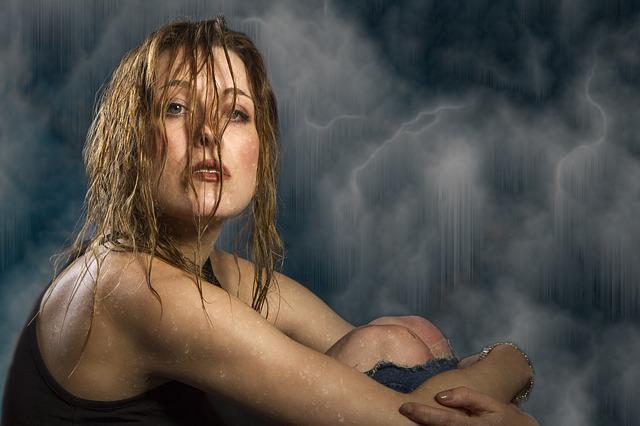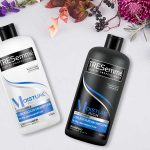
Moisturizing Hair In Best Ways To Remain Healthy And Soft
You might need to start a moisturizing routine if you’ve noticed that your hair has become dry and frizzy. If you have synthetic or natural hair, nourishing conditioners and oils are required. In order to avoid fly-away hairs and dry patches, hydrate your scalp and hair equally. Continue moisturizing your hair a few times per week after using leave-in conditioners, deep treatment hair masques, and oils to prevent drying out. The article will explain moisturizing air in the best ways to remain healthy and soft.
Table of Contents
Moisturizing Hair Is A Common Thing
Just as you use moisturizer for your skin, your hair needs the same daily hydration dose.
Whatever your problem-split hair, fragile hair, or lack of gloss-there are many common reasons why hair looks unhealthy: sun exposure, chlorine, washing your hair too often, not using conditioner, and washing it with hot water.
If you often use hot tools and hair dye, your hair may really start to show signs of damage.
High temperatures can cause moisture in the hair to evaporate, destroying the balance of protective lipids. Products such as split-head repairers, conditioners, and deep conditioning masks can seal the outer layer of the strand, making it temporarily look smoother, less worn, and feel softer, thus helping to protect the hair from further damage.
Why My Hair Dry?
When it comes to moisturizing hair, it’s hard not to discuss why hair needs moisture in the first place. There are several reasons why hair dries naturally. First of all, it’s just the way curly hair grows.
The natural shape of curly hair makes it difficult for the natural oil produced by the scalp to flow down each hair stem. Generally speaking, in straight hair, this is the reason to keep your hair moist. On the other hand, some people with curly hair may find their roots moist, but their hair is dry from the middle to the end. If you blow your curly hair straight, you may notice that your hair will become greasy more quickly.
Another common reason is to wash with too hot water. Washing your hair with anything other than warm water will cause the stratum corneum to open, and when this happens, it is like a leaky faucet, and any water you store there will escape. If you don’t put the water back in place and seal it with a natural hair moisturizer, you will find yourself in a continuous drying cycle. There are also considerations of porosity.
The porosity of your hair depends on how much it stays in moisture. In hair, porosity depends largely on the state of the stratum corneum. In healthy hair, the stratum corneum is opened to allow moisture in and then sealed to retain moisture. The damaged stratum corneum may not open at all, or if it does open, it may be difficult to close. If you are at both ends of the porosity spectrum, your hair is likely to be dry.
What Ingredients Are Needed For Hair Moisturizer
Since not all hair moisturizers are equal, people with dry hair should pay attention to specific ingredients such as aloe, avocado, honey, and olive oil when looking for the next product.
Aloe juice contains proteolytic enzymes that can moisturize hair, help hair maintain a healthy pH balance, and improve hair elasticity. Honey and glycerin are also two of the best moisturizers; they are natural moisturizers that combine with water to lock in moisture. Shea butter is hard to make a mistake when you want real moisture. It is good for your hair, scalp, and skin because it is rich in zinc, vitamins An and E, and other essential fatty acids. Finally, high-quality oils, such as avocado and olive oil, can also seal moisture, increase elasticity and prevent curling.
Tips For Moisturizing Natural Hair
Skip Sulfates
It’s a tent pole of smooth beauty: sulfate-free shampoos. Sulfates, which consist of sodium lauryl sulfate and sodium Laureth sulfate, are what offer regular shampoos that sudsy lather. However, they are pretty stripping your scalp’s herbal oils, can disrupt the refined scalp microbiome, set off pores and skin stipulations like dermatitis, and can make contributions to frizz bodily damage and the fading of hair dye.
When you change to sulfate-free shampoos, simple word that you will no longer get the equal foamy feeling. (So put together for a one-of-a-kind sensorial experience.) And also, lathering is no longer an indication of effectiveness. Think about your face washes for a moment: You comprehend that an oil, cream, or balm purifier can be simply as fine at washing your face as a sudsy one.
Co-wash
Co-washing stands for “conditioner washing,” or the use of a very unique kind of conditioner that hydrates the hair and scalp whilst gently cleaning it as well. “Co-washing lets in the gentler cleaning except for the drying detergents that can damage the scalp and hair. Also, co-washing protects the integrity and power of the hair whilst preserving its herbal oils,” says hairstylist Miko Branch, founder of herbal hair care company Miss Jessie’s.
Co-washing is all about your schedule, too: While anybody is going to have an extraordinary hair wash routine, you do want to desirable shampoo your hair weekly—but between your shampoos, you use your co-wash.
Use Shampoos With Emollients
Along with skipping sulfates, you need to seem to be for shampoos that have natural emollients. Look for botanical oils, herbal fruit extracts, and oils and butter (check out a proper listing here). If you are not one to examine the ingredient label, simply appear for shampoos that are marketed for “smoothing” or “frizz-free,” as these are frequently chock-full of herbal hydration.
Lean On Your Conditioner
Conditioners do simply what the title implies: They situation your strands. “This kind of conditioner will hydrate your hair and assist it to be much less frizzy, as its motive is to additionally clean your cuticles and add softness,” says hair professional and advisor Sarah Roberts. “Think of when you add softener to your garments after washing them.”

Opt For Normal Masks
For greater moisture, add in masks weekly or greater often. These are generally thicker, and incorporate greater lively components (and consequently price more, too)—but as soon as you sense your strands after use, you may apprehend why.
“A deep conditioner is an intensive moisturizing and nourishing treatment, additionally known as ‘deep treatment’ and ‘masque.’ These can be damaged down into two categories: these intended to supply proteins, and these notably for moisture,” writes Roberts. “As you may also know, wholesome hair is stability between moisture and protein, so we want to use both, relying on the character desires of our hair. These conditioners are usually pretty thick in consistency and ought to be left on the hair, with heat, for 20 to 30 minutes. Think of deep conditioners as a five-star meal for your hair.”
Mix Up Some DIY Treatments
The excellent information is you do not have to lean on pricey store-bought treatments: Some of the pleasant hair redresses are ones you can make proper in your kitchen. DIY hair masks can be made of something from coconut oil, aloe vera, honey, or avocado—you title it. If you choose a listing of inspiration, see our favored DIY hair masks here.
Try A Pre-shampoo Treatment
Pre-shampoo redress is like specialist products, in which you observe a hydrating cream or oil on your hair earlier than you wash it. The thinking is that you practice your product for about 30 minutes prior to showering, letting the conditioning dealers settle into the strands, so they are higher capable to soak up the nutrients. Some favorites are castor oil, coconut oil, and argan oil.
Apply Warm Oil Treatments
Hot oil redress is a popular, time-tested way of life used in many, many cultures. It’s a hair care technique in which barely warmed oil is used to coat and mend dry hair. Traditionally, this is an at-home therapy (although some salons provide it), and it tends to be exceptional for very dry, coarse hair.
The oil is heated due to the fact it is a concept to assist opening the cuticle and letting the oil penetrate deeper. “The notion with warmth is that it breaks down the bonds and helps coat it better,” says board-certified dermatologist Doris Day, M.D. “I get the principle in the back of it; there aren’t always records to show it, however, it is been performed for a lengthy length of time, and we have not considered harm from it.”
The remedy in exercise varies pretty a bit: There is no one definitive approach that all customers agree on, so you will stop seeing a lot of unique hints out there. For our guide, study greater about warm oil remedies here.
Adjust Your Wash Schedule
How regularly must you wash your hair? Well, specialists and customers alike hostilities with this due to the fact there is no genuine equation that works for everyone, all of the time. “It sincerely simply comes down to education: Learn about the elements at play when it comes to your scalp and hair health, then you can modify your behaviors based totally on that,” says licensed trichologist Shab Reslan. And one way that you may additionally see that your wash timetable is not working for you is dry hair.
See, over-shampooing or shampooing with too harsh of a product will reason dryness of the scalp and hair. A dry scalp generally feels tight, and itchy, and would possibly come with small dry flakes. If you suspect this is your issue, wean yourself off your shampoo schedule. Start via skipping one wash day a week for a few weeks, and then pass by another—do this till your scalp feels much less annoyed and your herbal oils are balanced.
Use Leave-in Conditioners
“The position of these conditioners is to refortify the cuticle with a defensive coating and add extra moisture to the cortex, permitting the hair to maintain developing besides breaking. A leave-in conditioner is to be used after washing your hair to refill and preserve moisture,” says Roberts. “They are beneficial for controlling frizz, detangling strands, and retaining curls smooth. These conditioners are commonly mild lotions, creams, or liquids. Leave-in sprays are also effective; they are convenient to follow to the ends of hair that want specific interest and safety for holding length.” See some of our preferred leave-ins here.
Seal In Water With Oils
Oils have herbal occlusive properties. A reminder: Occlusive elements are ones that create a thick, impenetrable barrier around your hair. In the herbal world, these are your waxes like candelilla, carnauba, palm kernel, beeswax, or lanolin (“traditional” examples encompass silicones and petroleum). They are additionally many kinds of oils, like jojoba or olive oils. Given that they act as a water retention barrier, they additionally act as a barrier to outdoor forces: This is why they have to be the final step of your routine. After you click on an occlusive, something layered on the pinnacle isn’t always getting previous to it.
Layer And Cocktail Ingredients
When styling hair, specifically for those with curly hair, the key to preserving strands hydrated is thru layering, such as the LOC method. It was once coined by way of the natural hair community, a mnemonic gadget for the order of merchandise you must use post-rinse: That is, liquid (or leave-in), oil, and cream. “For me, the LOC technique is something you do on every occasion you are doing a wash-and-go curly style,” provides hairstylist Anthony Dickey, founder of Hair Rules.
The concept right here is that you lure in water and vitamins from the wash and leave in with the oil—then you drop it off with the cream to add keep and definition.
Avoid Silicones
Silicones are a category of compounds that add slip and silky texture to hair and pores and skin care products. Silicones are occlusive in nature: “Their predominant feature is to create a bodily barrier coating on the pores and skin and hair that is resistant to water and air,” says board-certified dermatologist Zenovia Gabriel, M.D., FAAD. “They are the greater filler that helps a product experience greater luxurious.” They are used in hair care due to the fact they are cheap, effective, and make hair show up vibrant and frizz-free.
However, silicones are hydrophobic, which means they repel water. They do this by using nature, and it is the motive they are theoretically outstanding at decreasing frizz (frizz is prompted by way of humidity lifting up the hair’s cuticle, ensuing in a frayed, puffy texture). But when you wash hair, these silicones grasp to hair and do not effortlessly rinse off as they are repelling the water rather of dissolving in it.
So if you use a leave-in conditioner with silicones then go to wash it with a shampoo that includes silicones, and then circumstance with silicones, that activity is probably inflicting pretty a bit of silicone layering and buildup on the scalp and strand. So even if this man or woman merchandise includes good-for-hair ingredients, these vitamins may also now not be in a position to penetrate the shaft due to the fact of the occlusive silicone coating. Over time this will dry out your hair.
Skip Warm Equipment Altogether
It needs to come as no shock that warm tools, in particular when used at excessive heat, motive strands to dry out. (I mean, a blow-dryer’s job is actually to dry your hair, no?) It no longer solely reasons dryness, however it reasons harm to the hair shaft. Heat can restructure and restyle your hair sample by means of breaking down the hydrogen bonds in your hair; whilst that manner offers us the curls or straight strands we want, do it each day and it can be rather damaging. One learn even discovered that everyday warmness styling can motivate considerable breakage and roughness, which looks a little counterintuitive for those who continuously run a flat iron via their hair to clean out the texture. Alicia Miller, countrywide grasp coach for Davines North America, agrees: “Giving our hair and scalp time to reset and relaxation will increase standard look and health.”






